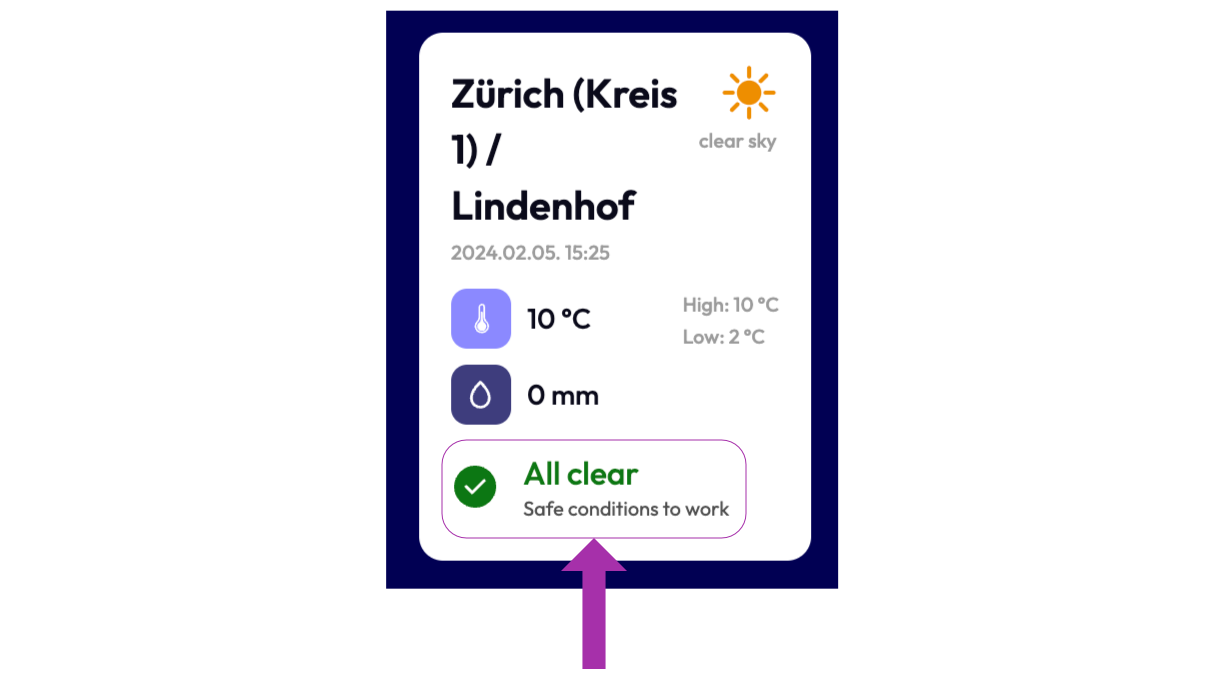Weather and Hazard Quick View: Access Key Information at a Glance
Understanding the impacts of weather on our daily lives is crucial. In ClimaLinks, Utility Widget rapidly shows when there is any danger to human life. We use a selection of indices which we continue to grow over time. Currently, we use the Humidex and Windchill indices, which provide key insights into how the temperature feels to the human body, factoring in humidity and wind respectively.

Understanding Risk Indices
Humidex
The Humidex combines air temperature with humidity to reflect the perceived temperature. It's especially useful in hot, humid climates for identifying heat stress risks.
See Humidex Risk Levels Details
Humidex Risk Levels
- No Risk: No discomfort.
- Low Risk (Humidex 20-29): Little discomfort.
- Moderate Risk (Humidex 30-39): Some discomfort.
- High Risk (Humidex 40-44): Great discomfort; avoid exertion.
- Very High Risk (Humidex 45+): Dangerous; heat stroke possible.
Windchill
Windchill combines air temperature with wind speed, estimating the chilling effect on the body in cold weather. It's crucial for understanding frostbite and hypothermia risks.
See Windchill Risk Levels Details
Windchill Risk Levels
- No Risk (Windchill 0+): No discomfort.
- Low Risk (Windchill -9 to -1): Slight increase in discomfort.
- Moderate Risk (Windchill -27 to -10): Increased discomfort; risk of hypothermia and frostbite.
- High Risk (Windchill -39 to -28): Exposed skin can freeze in 10 to 30 minutes.
- Very High Risk (Windchill -47 to -40): Exposed skin can freeze in 5 to 10 minutes.
- Severe Risk (Windchill -54 to -48): Exposed skin can freeze in 2 to 5 minutes.
- Extreme Risk (Windchill -55 and below): Exposed skin can freeze in less than 2 minutes.